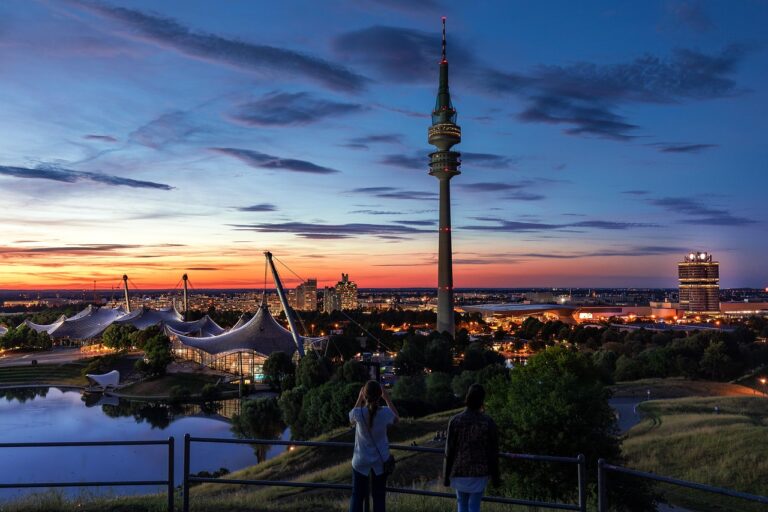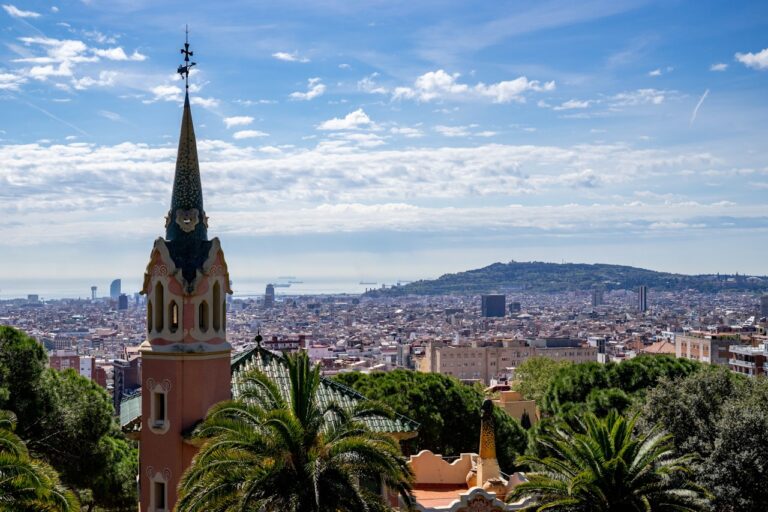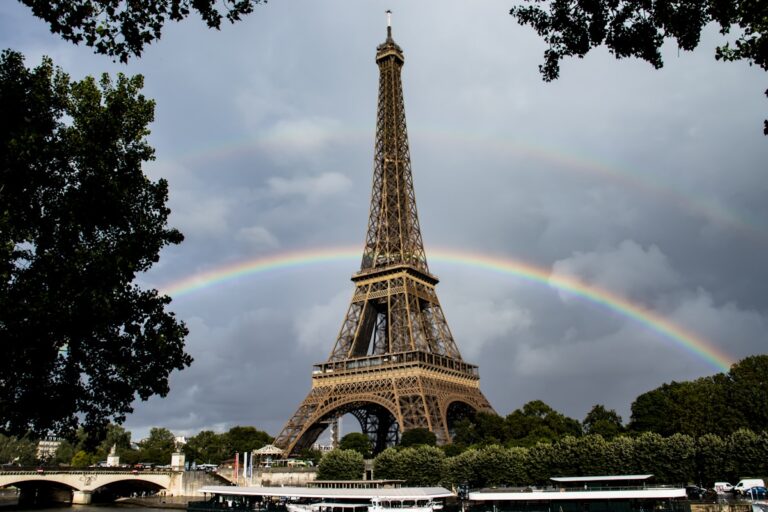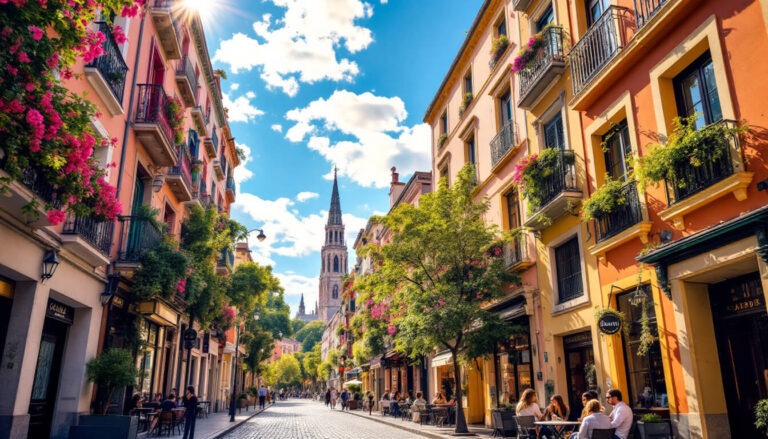Best Time to Visit Rome, Italy
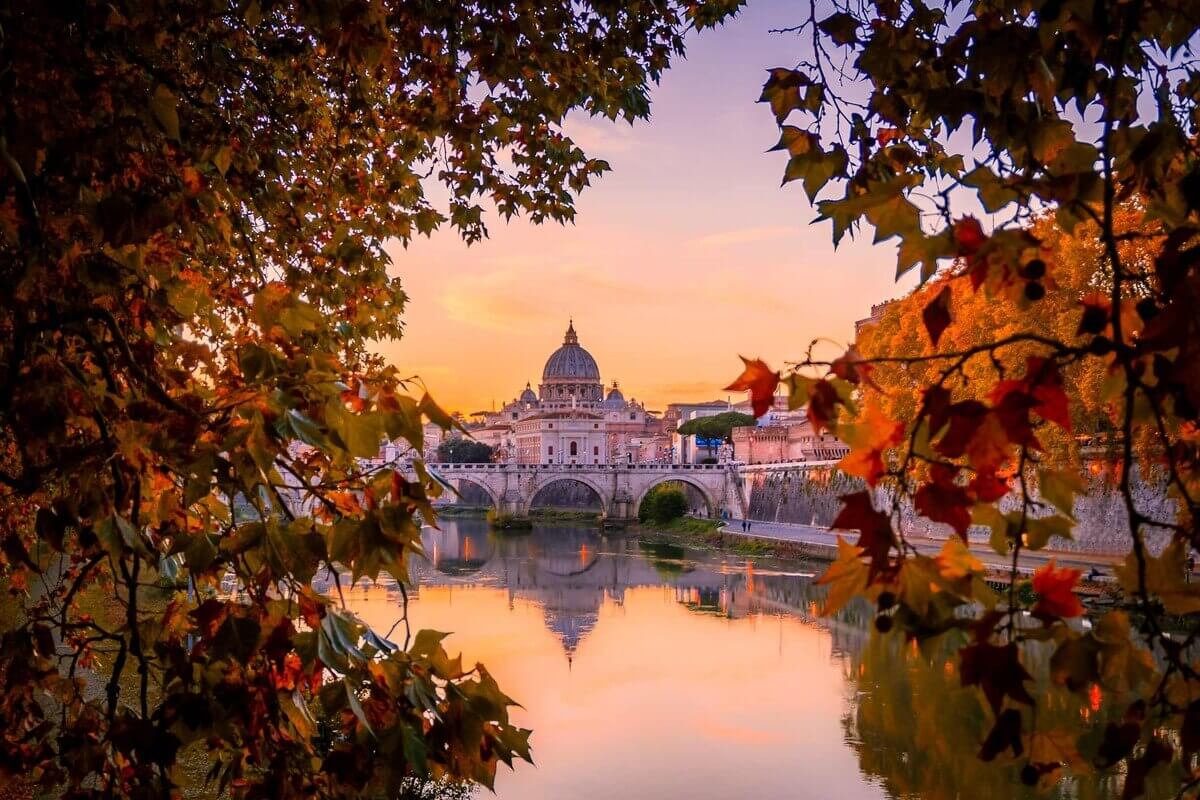
The Best Time to Visit Rome, Italy – Rome’s charm changes a lot depending on when you visit, offering different things at various times of the year.
- Understanding the Best Time to Travel to Rome
- Visiting Rome in Spring: Mild Weather and Fewer Crowds
- Summer in Rome: Hot Weather, Festivals, and Peak Tourism
- Fall in Rome: Pleasant Temperatures and Cultural Events
- Winter in Rome: Fewer Tourists and Festive Atmosphere
- Worst Time to Visit Rome: Crowds, Heat, and Closures
- Final Thoughts on Choosing the Best Time to Go to Rome
- Wrapping Up: Decide the Best Time to Travel to Rome for Your Next Trip
The old city goes from a hot, sunny place in the summer to a foggy, magical place in the winter. Each time of year has its own good and not-so-good points.
Even though tons of people visit Rome every year, when you go can make a big difference.
You could either feel swamped by tourists or have a much more personal experience of what Rome is really like. If you get how the seasons affect things, you can figure out the best times to see this amazing place.
TL;DR
Hide- Spring (April-May) and fall (September-October) are optimal times to visit Rome, offering mild temperatures and fewer crowds than peak season.
- September stands out with pleasant 75°F temperatures, shorter attraction queues, and comfortable conditions for exploring the city.
- Avoid August visits due to intense heat above 90°F, massive tourist crowds, and many local businesses closing for Ferragosto.
- Winter (November-February) offers the lowest hotel rates and airfares, making it ideal for budget-conscious travelers despite occasional rain.
- May provides perfect weather for outdoor activities, blooming gardens, and cultural events without summer's overwhelming tourist numbers.
Understanding the Best Time to Travel to Rome
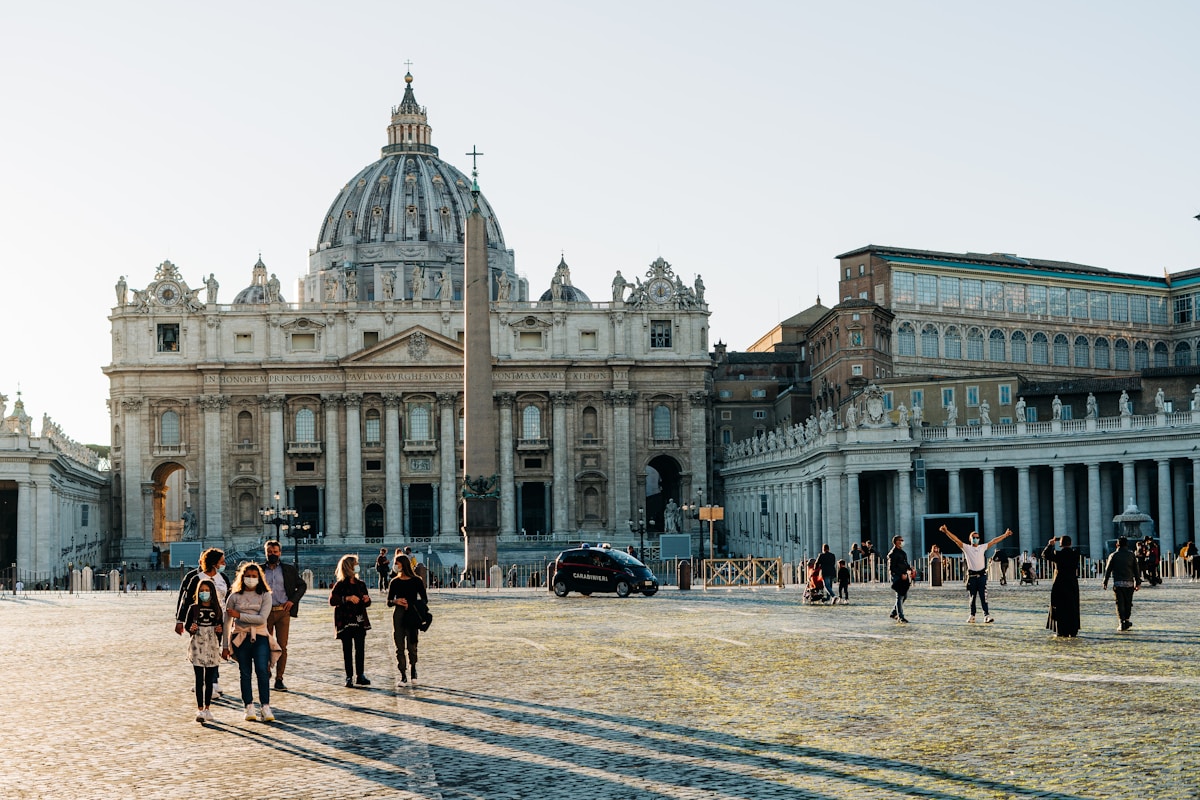
The best time to visit Rome depends largely on personal preferences, with each season offering distinct experiences in the Eternal City.
Spring (April-May) and fall (September-October) provide ideal conditions with mild temperatures and fewer crowds, making these periods perfect for most travelers seeking a balance of comfort and cultural immersion.
Summer attracts those who embrace lively festivals and long daylight hours despite the heat and tourist peaks, while winter appeals to budget-conscious travelers and those who appreciate Rome’s artistic treasures without the usual crowds.
When is the Best Time to Visit Rome?
Choosing the best time to visit Rome requires careful consideration of three key factors: weather patterns, tourist density, and seasonal pricing variations.
Rome is best enjoyed during the shoulder seasons, with mid-March to May and mid-September to November offering ideal weather and fewer crowds for sightseeing (Headout.com). For a more local experience, late spring and early fall come highly recommended by Lonely Planet. Additionally, budget travelers will find attractive deals on accommodations and airfare during off-peak months like November, early December, mid-January, and February (Headout.com).
The Eternal City experiences distinct seasonal rhythms, from the sun-drenched but crowded summer months to the mild, less congested shoulder seasons of spring and fall.
Travelers must weigh their priorities between experiencing Rome’s outdoor splendors in ideal weather conditions, maneuvering through the crowds at major attractions, and securing the most economical rates for accommodations and activities.
Factors That Influence the Best Time to Go to Rome
Determining the ideal time to visit Rome requires careful consideration of several key factors that greatly impact the travel experience.
The best time to visit Rome depends on weather patterns, from January’s crisp winter days to August’s intense heat.
Tourist crowds, summer in Rome’s peak season, and seasonal pricing fluctuations affect costs, with the cheapest time to visit Rome typically falling in low season months.
Balancing Weather, Crowds, and Costs for the Ideal Trip
Savvy travelers can strike an ideal balance between Rome’s weather conditions, tourist density, and travel costs by visiting during the shoulder seasons of April-May or September-October.
The best time of year to visit Rome combines these key factors:
- Pleasant temperatures ranging from 65-75°F (18-24°C)
- Lower hotel rates and cheaper flights compared to peak summer
- Manageable crowds at major attractions
- Extended daylight hours for sightseeing without summer’s intense heat
Best Time of Year to Visit Rome for Different Types of Travelers
Cultural enthusiasts and sightseers find ideal conditions in Rome during the shoulder seasons of March to mid-May and September to November, when moderate temperatures and smaller crowds allow for unhurried exploration of the city’s archaeological treasures and the best museums in Rome.
Budget-conscious travelers can take advantage of reduced hotel rates and airfares during the winter months of December through February, though they should pack accordingly for occasional rain and temperatures that hover around 8-13°C (46-55°F).
These winter months also offer unique opportunities to experience Roman cultural events like Carnevale in February and Christmas markets in December, while enjoying considerably shorter queues at major attractions.
Best Months to Visit Rome for Sightseeing and Culture
When it comes to exploring Rome’s rich cultural heritage and iconic landmarks, the shoulder seasons of April to mid-June and September to October offer the most rewarding experience.
The best time to visit Rome aligns with these moderate months, providing:
- Comfortable temperatures for exploring ancient ruins
- Shorter queues at major attractions
- Lively cultural festivals and events
- More authentic interactions with locals as tourist crowds thin
Cheapest Time to Visit Rome for Budget-Friendly Travel
Travelers seeking the most economical Roman holiday will find exceptional value during the winter months of November through February, excluding the Christmas and New Year period.
When traveling to Rome during these off-peak months, visitors benefit from considerably reduced airfares and hotel rates.
Rome in January and February offers budget-conscious explorers the added advantages of shorter lines at attractions and more authentic local experiences.
Visiting Rome in Spring: Mild Weather and Fewer Crowds
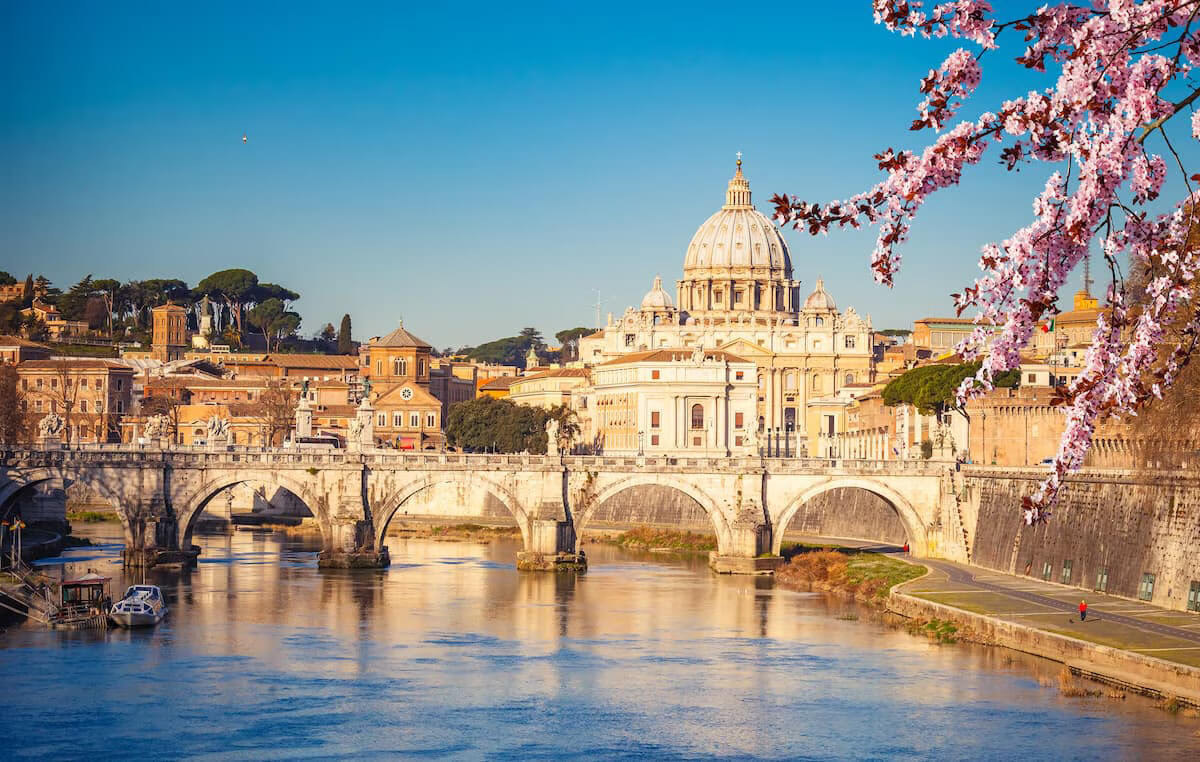
Spring transforms Rome into an enchanting destination as the city emerges from winter, with March bringing mild temperatures and the first hints of almond blossoms along the ancient walls.
April offers ideal conditions for exploring the Forum and Vatican Museums, combining comfortable 65°F (18°C) days with shorter queues and the lively celebrations of Holy Week.
Rome in March: Transitioning Into Warmer Days
March in Rome marks a transformative period as winter recedes, with daytime temperatures climbing to a pleasant 15-17°C (59-63°F) while occasional rain showers sustain the city’s emerging spring blossoms.
Visitors can experience the spiritual atmosphere of Lent and Easter celebrations, including the Via Crucis procession at the Colosseum led by the Pope on Good Friday.
The Rome Marathon, typically held in late March, brings energetic crowds to cheer on runners as they race past ancient monuments and through historic piazzas.
Weather Patterns and Average Temperatures
As winter releases its grip on the Eternal City, Rome experiences a gradual warming trend throughout March, with daily temperatures typically ranging from 48°F to 60°F (9°C to 16°C).
Rome’s annual climate evolves from mild winters to hot summers:
- Temperature in Rome in January averages 45°F (7°C)
- Weather in Rome in June climbs to 80°F (27°C)
- Weather in Rome in July and August peaks at 88°F (31°C)
Mediterranean rainfall patterns bring scattered showers year-round.
Events and Festivals Worth Attending
During Rome’s shift to spring, visitors can experience several notable cultural events that showcase the city’s rich heritage and religious traditions.
The best times to visit Rome include April’s Holy Week processions and November’s Roma Jazz Festival.
While the best months to visit Rome vary, spring brings the Festa della Primavera flower exhibition and Easter celebrations at St. Peter’s Square.
Rome in April: One of the Best Months to Visit Rome
April’s mild Mediterranean climate creates perfect conditions for exploring Rome’s outdoor attractions and ancient ruins, with temperatures hovering comfortably between 15-20°C (59-68°F).
The city comes alive with cultural celebrations, including elaborate Easter ceremonies at the Vatican and the excitement of the Rome Marathon drawing thousands of participants and spectators.
Tourists can enjoy extended daylight hours while discovering the city’s archaeological treasures and outdoor cafes, all while experiencing shorter queues than the peak summer months.
Ideal Weather for Walking Tours and Outdoor Attractions
The mild temperatures and clear skies of April create perfect conditions for exploring Rome’s countless outdoor attractions and archaeological wonders.
Unlike the temperature in Rome in July, spring offers comfortable exploration without summer crowds.
Key advantages for outdoor activities:
- Perfect 65-70°F (18-21°C) temperatures for extended walking tours
- Less rainfall than Rome in November weather
- Clear visibility for photography and panoramic views
- Comfortable conditions for open-air dining
Celebrations Like Easter and the Rome Marathon
Spring’s pleasant outdoor conditions in Rome coincide with some of the city’s most significant cultural celebrations.
Easter Week draws thousands to Vatican City for papal ceremonies and traditional processions, while the Rome Marathon transforms ancient streets into a 26.2-mile course through history.
Holy Week festivities peak with Easter Sunday mass at St. Peter’s Basilica, offering visitors an unforgettable blend of spiritual and cultural experiences.
Rome in May: Comfortable Temperatures and Blooming Gardens
May’s idyllic temperatures, averaging between 18-23°C (65-73°F), create perfect conditions for exploring Rome’s archaeological treasures and meandering through its historic streets.
The city’s numerous gardens, including the Villa Borghese and Rose Garden on the Aventine Hill, burst with lively blooms and perfumed air, offering enchanting spaces for afternoon walks.
Locals and visitors alike fill the outdoor cafés and piazzas, embracing the quintessentially Roman practice of al fresco dining and people-watching amid the spring sunshine.
Pleasant Weather for Exploring Historical Sites
Visiting Rome in spring rewards travelers with idyllic temperatures averaging 20°C (68°F), creating perfect conditions for exploring the city’s vast archaeological treasures and outdoor monuments.
The mild climate allows for extended outdoor excursions without the summer’s intense heat:
- Comfortable exploration of the expansive Roman Forum ruins
- Pleasant walks through the open-air corridors of the Colosseum
- Easy climbs up ancient hills like Palatine and Aventine
- Ideal conditions for photographing architecture in natural light
Outdoor Cafés, Piazzas, and Garden Strolls
The enchanting spring weather in Rome transforms the city’s outdoor spaces into lively social hubs, where locals and visitors alike embrace the cherished Italian tradition of al fresco dining and leisurely strolls.
Historic piazzas buzz with energy as cafés spill onto cobblestone streets, while the city’s gardens, like Villa Borghese, showcase colorful blooms and provide perfect settings for afternoon passeggiata.
Summer in Rome: Hot Weather, Festivals, and Peak Tourism
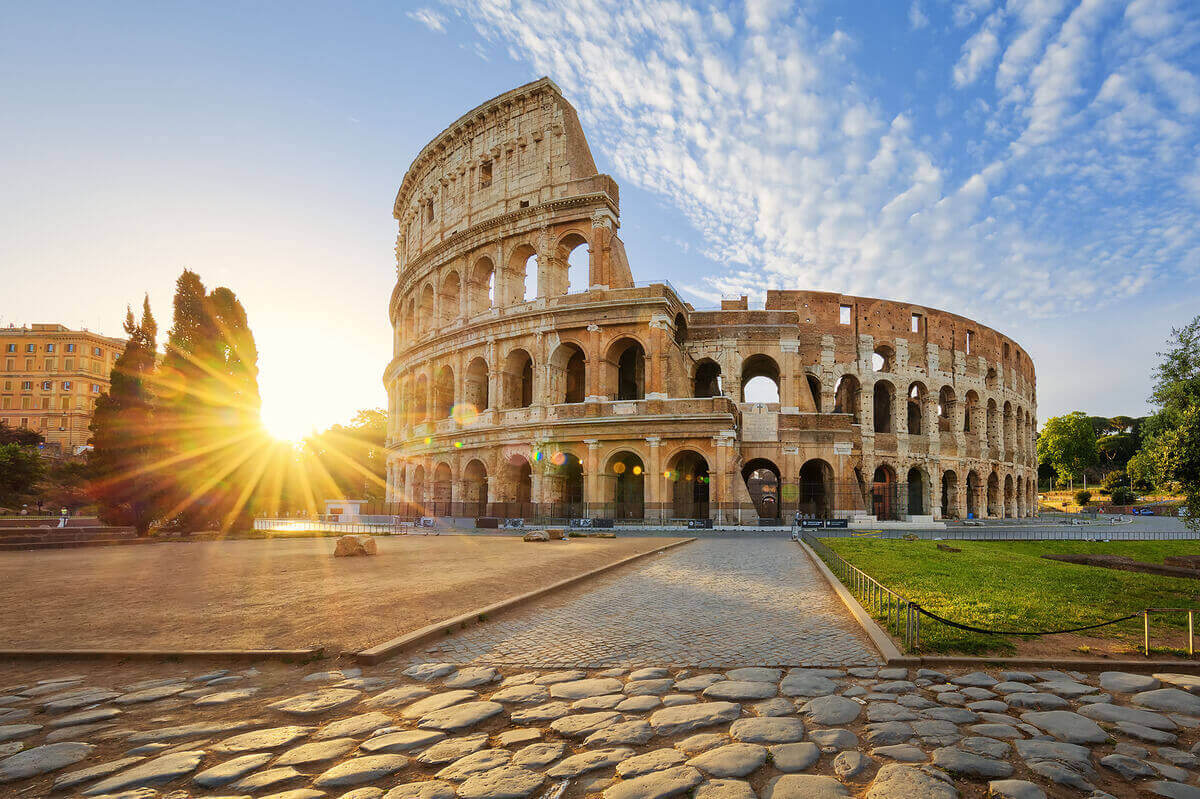
Summer turns Rome into a lively yet challenging destination as temperatures climb steadily from June’s pleasant warmth to July’s intense heat, culminating in August’s sweltering peak.
The season brings extended daylight hours perfect for evening strolls and outdoor festivals, though midday activities become increasingly difficult as temperatures regularly exceed 30°C (86°F).
August particularly tests visitors’ resilience with its oppressive heat, while many locals escape the city for traditional ferragosto holidays, leaving some smaller shops and restaurants closed.
Weather in Rome in June: Warm Days and Long Evenings
Rome welcomes summer with average June temperatures climbing to 27°C (81°F), ushering in long, sun-drenched days that stretch until 9 PM.
The warmth transforms the city’s ancient piazzas into lively gathering spaces, particularly during the Republic Day festivities on June 2nd, when military parades and aerial displays fill the streets and skies.
While the rising temperatures signal peak tourist season, the extended daylight hours allow visitors to explore Rome’s outdoor attractions and enjoy al fresco dining well into the evening.
Temperature in Rome in June and What to Expect
Typically, June brings warm Mediterranean sunshine to the Eternal City, with average daytime temperatures ranging from 20°C to 28°C (68°F to 82°F).
These pleasant conditions create perfect opportunities for outdoor exploration.
- Morning temperatures start mild, ideal for visiting uncrowded attractions
- Afternoons reach peak warmth, perfect for gelato breaks
- Evening temperatures cool slightly for comfortable al fresco dining
- Humidity levels remain moderate compared to July and August
Major Events Like Republic Day Celebrations
Among the most lively celebrations in June, Republic Day (Festa della Repubblica) on June 2nd transforms the city into a patriotic spectacle, commemorating Italy’s 1946 shift from monarchy to republic.
The holiday features a grand military parade along Via dei Fori Imperiali, with fighter jets streaming the Italian flag colors overhead and free museum access for cultural enlightenment.
Weather in Rome in July: High Temperatures and Tourist Crowds
July brings intense heat to Rome, with daytime temperatures regularly soaring above 30°C (86°F), sending locals and tourists alike in search of shade and air-conditioned refuges.
The scorching afternoons prompt many Romans to embrace the time-honored tradition of closing shops for extended lunch breaks, while visitors cool off in museums, churches, or underground catacombs.
As the sun sets, the city comes alive with evening concerts, rooftop aperitivos, and outdoor film screenings in historic piazzas, offering welcome relief from the day’s heat.
Temperature in Rome in July and How to Stay Cool
The sweltering heat of midsummer transforms Rome into an urban heat island, with temperatures regularly soaring above 30°C (86°F) during the day.
Locals combat the intense July heat with time-tested strategies:
- Seek refuge in centuries-old churches with naturally cool marble interiors
- Join Romans for evening passeggiata when temperatures drop
- Refill water bottles at the city’s ancient nasoni fountains
- Find shade in Villa Borghese’s Mediterranean pine groves
Nighttime Activities to Escape the Heat
When summer darkness falls over Rome, the city transforms into a lively nocturnal playground where visitors and locals alike seek respite from daytime temperatures.
Evening concerts fill ancient piazzas, while outdoor cinema festivals screen films under starlit skies. Restaurants spill onto cobblestone streets with late-night dining, and illuminated monuments offer cooler guided tours, making Rome’s nighttime a magical escape from July’s heat.
Weather in Rome in August: The Hottest Month and Local Holidays
August stands as Rome’s most challenging month for visitors, with scorching temperatures reaching 90°F (32°C) and the citywide phenomenon of Ferragosto, when locals escape to coastal retreats.
During this traditional mid-August holiday period, many family-owned restaurants, shops, and businesses close their doors for weeks at a time, leaving tourists to navigate a partially shuttered city.
Despite these closures, savvy travelers can take advantage of reduced crowds at major attractions and find respite in the city’s numerous air-conditioned museums, ancient underground sites, and the remaining open establishments that cater specifically to tourists.
Rome in August and the Impact of Ferragosto Closures
During Rome’s most intense summer month, August presents unique challenges and cultural experiences centered around Ferragosto, Italy’s most important summer holiday.
Many businesses shut down during this period, affecting visitors’ plans:
- Family-run restaurants and shops close for extended vacations
- Limited Rome’s public transportation schedules
- Museums and attractions operate on reduced hours
- Local Romans exodus to coastal areas, leaving the city to tourists
How to Enjoy the City While Many Businesses Are on Holiday
Despite the widespread business closures during Rome’s summer holiday season, visitors can still discover unique ways to experience the Eternal City’s charms.
Travelers can explore outdoor archaeological sites early morning, join evening food tours in operating establishments, attend lively cultural festivals, and mingle with locals at neighborhood spots that remain open.
Public parks in Rome, fountains, and major museums maintain regular hours.
Fall in Rome: Pleasant Temperatures and Cultural Events
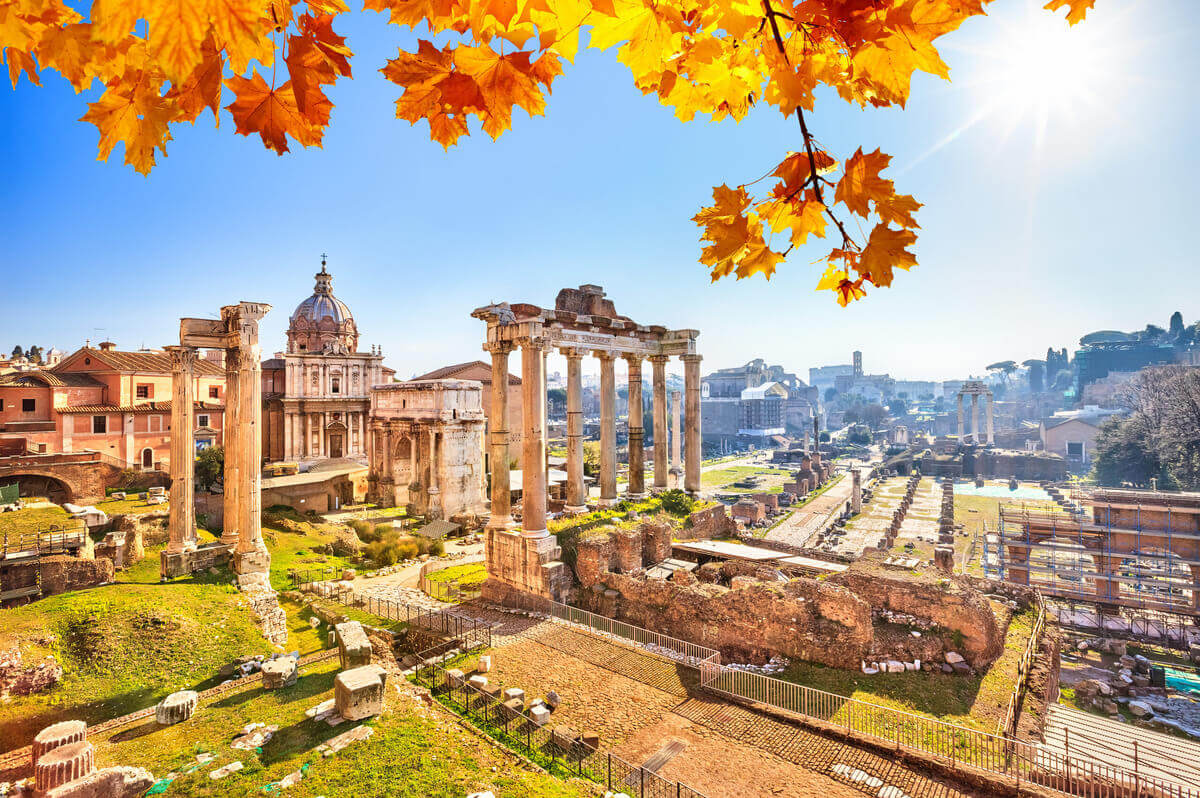
Autumn transforms Rome into an ideal destination as summer crowds thin and temperatures settle into comfortable ranges between 15-20°C (59-68°F).
The fall months bring a rich calendar of cultural festivals, including the Roma Europa Festival and the Rome Film Festival, while the golden light bathes ancient monuments in spectacular hues.
Visitors in autumn can fully appreciate Rome’s outdoor cafes, piazzas, and archaeological sites without the intense heat or tourist congestion typical of summer months.
Rome in September: A Great Time for Sightseeing
September transforms Rome into an ideal destination as summer crowds disperse and temperatures settle into a comfortable range perfect for exploring the city’s countless landmarks and ruins.
The harvest season brings lively wine festivals throughout the region, with local vintners showcasing their finest selections at events like the Marino Grape Festival.
Historic piazzas and neighborhoods come alive with seasonal outdoor markets, where visitors can browse artisanal goods and fresh produce while enjoying the mild autumn air.
Mild Weather and Lighter Crowds Compared to Summer
While summer crowds dissipate and temperatures moderate, Rome transforms into an ideal destination for visitors during fall, particularly in September.
The city offers pleasant daytime highs around 75°F (24°C), creating perfect conditions for exploring ancient ruins and piazzas.
- Morning mists add mystique to historic sites
- Shorter queues at major attractions
- Comfortable evening strolls through cobblestone streets
- Local festivals without peak-season tourist congestion
Wine Festivals and Outdoor Markets
During Rome’s harvest season, the city’s piazzas and cobblestone streets come alive with lively wine festivals and open-air markets that showcase the region’s finest vintages and seasonal delicacies.
Local vintners present their latest harvests at events like the Marino Wine Festival, while markets overflow with fresh porcini mushrooms, truffles, and chestnuts.
Visitors can freely explore these authentic cultural gatherings throughout September and October.
Rome in October: One of the Best Times to Visit Rome
October offers visitors to Rome near-perfect temperatures in the mid-60s Fahrenheit, creating ideal conditions for exploring the city’s vast archaeological treasures and architectural wonders without summer’s intense heat.
The month brings a bounty of seasonal food festivals celebrating autumn ingredients like truffles, chestnuts, and newly pressed olive oil throughout the historic neighborhoods.
As harvest season peaks, locals and tourists alike gather at traditional sagre (food festivals) and outdoor markets, where the autumn atmosphere transforms Rome’s ancient streets into a gastronomic paradise.
Comfortable Temperatures for Exploring Historical Sites
The mild temperatures of Rome in October, averaging between 15-20°C (59-68°F), create ideal conditions for exploring the city’s vast archaeological treasures and historical monuments.
These pleasant autumn temperatures allow visitors to:
- Explore the Colosseum without summer’s intense heat
- Wander through the Roman Forum’s ancient ruins comfortably
- Tour Vatican City’s expansive museums and gardens
- Navigate cobblestone streets and climb Rome’s seven hills with ease
Food Festivals and Seasonal Delicacies
Fall harvest season transforms Rome into a gastronomic paradise, with food festivals and seasonal ingredients taking center stage throughout October.
Local trattorias showcase fresh porcini mushrooms, chestnuts, and truffles in traditional dishes.
The Roma Wine Festival and Ottobrata Romana celebrate the region’s vintages and culinary heritage, while seasonal artichokes and wild game enhance authentic Roman dining experiences.
Rome in November: Cooler Days and Fewer Tourists
November in Rome brings cooler temperatures averaging 13°C (55°F), making indoor explorations of the city’s renowned museums and historic sites especially appealing.
Visitors should pack layers, including a water-resistant jacket and comfortable walking shoes, as November typically sees increased rainfall and shorter daylight hours.
The reduced tourist crowds during this autumn month create perfect conditions for unhurried visits to the Vatican Museums, Galleria Borghese, and other cultural treasures, often without the need for lengthy queues.
Rome in November Weather and What to Pack
Visiting Rome in November offers travelers a delightful sweet spot between autumn’s mild temperatures and diminishing tourist crowds.
Temperatures average 15°C (59°F), with occasional rain showers. Travelers should pack strategically for comfort and style.
Essential items for November in Rome:
- Waterproof walking shoes and umbrella
- Light layers with a warm coat
- Dressy attire for evening venues
- Camera for capturing autumn colors
Visiting Museums and Indoor Attractions
The cooler temperatures and intermittent rain showers make November an ideal time to explore Rome’s vast network of indoor cultural treasures.
Museums like the Vatican Museums and Galleria Borghese offer shelter from autumn weather while showcasing masterpieces with fewer crowds.
Major attractions such as the Pantheon and Basilica di San Pietro provide both architectural magnificence and comfortable refuge during November’s occasional drizzle.
Winter in Rome: Fewer Tourists and Festive Atmosphere

Winter transforms Rome into an enchanting blend of holiday charm and peaceful exploration, with festive markets dotting the piazzas and twinkling lights adorning the ancient streets from December through early January.
The coldest months bring significantly reduced crowds at major attractions like the Vatican Museums and Colosseum, while savvy travelers can secure substantial discounts on accommodations and flights, particularly in January.
February offers a uniquely tranquil experience of the Eternal City, as locals reclaim their favorite cafes and restaurants before the spring tourism surge begins.
Rome in December: Holiday Markets and Christmas Lights
Rome’s mild winter temperatures, typically ranging from 45-60°F (7-15°C), create ideal conditions for exploring the city’s enchanting holiday atmosphere with fewer tourist crowds.
The eternal city transforms during December as twinkling lights adorn the Spanish Steps, while the magnificent Christmas tree at St. Peter’s Square stands as a centerpiece of Vatican City’s seasonal celebrations.
Visitors can experience authentic Italian holiday traditions at the Piazza Navona Christmas Market, where local artisans showcase handcrafted ornaments and vendors serve seasonal treats like roasted chestnuts and vin brulé.
Mild Winter Weather and Festive Decorations
During winter months, visitors to Rome discover a charming blend of mild Mediterranean weather and enchanting holiday decorations throughout the historic center.
The city’s winter temperatures rarely drop below freezing, making outdoor exploration comfortable.
The festive atmosphere includes:
- Twinkling lights adorning ancient monuments
- Nativity scenes (presepi) in churches and squares
- Decorated pine trees in major piazzas
- Glowing archways along cobblestone streets
Best Places to Visit During the Holiday Season
As holiday festivities transform the Eternal City, several iconic locations showcase Rome’s most magical December attractions.
St. Peter’s Square displays its towering Christmas tree and life-sized nativity scene, while Piazza Navona hosts a traditional Christmas market filled with artisanal crafts and seasonal treats.
The Pantheon and Spanish Steps sparkle with twinkling lights, creating enchanting photo opportunities for visitors.
Rome in January: Cold Weather but Great Travel Deals
January in Rome brings average temperatures between 3-12°C (37-54°F), with crisp winter days that require warm layers but rarely see snow or extreme cold.
Savvy travelers can find exceptional airfare deals during this quiet post-holiday period, often saving 30-40% compared to peak season rates.
While some outdoor cafes may be closed, visitors enjoy dramatically shorter lines at major attractions like the Vatican Museums and Colosseum, plus markedly reduced hotel rates across all accommodation categories.
Temperature in Rome in January and What to Expect
Winter settles over Rome in January with average temperatures ranging from 3°C (37°F) to 12°C (54°F), creating a crisp Mediterranean atmosphere that transforms the Eternal City.
Locals bundle up as gentle rains occasionally sweep through cobblestone streets, while clear days offer pristine winter light perfect for photography.
- Mild winter days ideal for outdoor exploration
- Occasional frost in early mornings
- Light rainfall occurring 7-8 days per month
- Possibility of rare snow dusting ancient monuments
Cheapest Time to Fly to Rome for Off-Season Discounts
Savvy travelers seeking significant savings on airfare to Rome will find January and February offering the most attractive deals, with round-trip flights often dropping 40-50% below peak season prices.
Major airlines compete aggressively during these winter months, providing budget-conscious visitors with exceptional value.
Hotels and tourist attractions also reduce rates substantially, making Rome’s cultural treasures accessible at off-season discounts.
Rome in February: A Quiet Month Before Spring Begins
February in Rome maintains winter’s chill with average temperatures between 3-13°C (37-55°F), requiring visitors to pack warm layers and waterproof outerwear for occasional rain showers.
The city comes alive during Carnevale Romano, featuring elaborate masked balls, street performances, and traditional sweet treats like frappe and castagnole in the weeks leading up to Lent.
With tourist numbers at their lowest, February offers intimate experiences at major attractions and the opportunity to explore Rome’s museums and churches in peaceful solitude.
Weather in Rome in February and How to Prepare
As temperatures hover between 8-13°C (46-55°F), Rome in February offers visitors a peaceful retreat from the usual tourist crowds while maintaining its timeless charm.
February brings occasional rainfall, requiring preparation for variable conditions.
- Pack layers including a warm coat, scarf, and water-resistant shoes
- Carry a compact umbrella for unexpected showers
- Include a light raincoat that fits over winter wear
- Consider thermal undergarments for outdoor sightseeing
Carnival Celebrations and Other Seasonal Events
While tourists flock to Rome during peak seasons, February transforms the Eternal City into a lively celebration of Italian culture through its Carnival festivities and winter events.
The city hosts animated masquerade balls, street parades featuring elaborate costumes, and traditional performances in historic piazzas.
Local theaters showcase classical concerts, while museums offer special exhibitions highlighting Rome’s rich artistic heritage during this culturally significant period.
Worst Time to Visit Rome: Crowds, Heat, and Closures
August marks Rome’s most challenging month for visitors, with temperatures soaring above 90°F (32°C) while massive crowds converge on popular attractions like the Vatican Museums and Colosseum.
Mid-summer tourists often face hour-long queues under the scorching sun, particularly during the peak hours of 10 AM to 4 PM at major sites.
Many family-owned restaurants and shops close for extended holidays during Ferragosto (mid-August), leaving travelers with fewer authentic dining options and a less genuine Roman experience.
When to Visit Rome and When to Avoid the Crowds
Rome’s peak tourist seasons in July and August bring intense crowds to major attractions like the Colosseum and Vatican Museums, with wait times often exceeding three hours even for ticket holders.
The combination of sweltering Mediterranean heat, reaching up to 95°F (35°C), and masses of tour groups can transform the enchanting ancient city into an overwhelming experience.
Savvy travelers might consider visiting during shoulder months like May or September, when crowds thin out but cultural events still flourish, or exploring popular sites during early morning or evening hours when most tour buses have departed.
High Tourist Seasons That Can Be Overwhelming
When planning a trip to visit the Eternal City, tourists should be aware of the challenging peak seasons that can greatly impact their experience.
The most overwhelming periods include:
- Mid-June through August, when sweltering temperatures and massive crowds converge
- Easter Week, attracting pilgrims and tourists for religious celebrations
- Christmas through Epiphany, drawing festive holiday crowds
- August 15 (Ferragosto), when many local businesses close
Alternatives for Enjoying Rome During Peak Months
Despite the challenges of peak tourist seasons, savvy travelers can still enjoy Rome’s splendors by implementing strategic alternatives.
Early morning visits to major attractions, exploring lesser-known neighborhoods like Trastevere and Testaccio, and booking skip-the-line tickets help avoid crowds.
Evening tours offer cooler temperatures and atmospheric experiences, while day trips to nearby towns like Orvieto provide peaceful cultural immersion.
Weather Challenges That May Affect Your Trip
Rome’s summer heatwaves from June through August can be particularly challenging, with temperatures often soaring above 90°F (32°C) and minimal shade in popular tourist areas.
October through December brings frequent rainfall to the Eternal City, though these showers typically alternate with periods of sunshine and mild temperatures.
Visitors can navigate these weather extremes by scheduling indoor activities during peak afternoon heat or rainy spells, while planning outdoor explorations for early mornings or clearer days.
Summer Heatwaves and How to Cope
During the peak of summer, temperatures in Rome frequently soar above 90°F (32°C), making July and August particularly challenging months for visitors.
Romans cope with intense heat through time-tested strategies that travelers can adopt:
- Follow the local custom of “riposo,” resting during peak afternoon hours
- Seek refuge in cool marble-lined churches and underground catacombs
- Carry a refillable water bottle to use the city’s ancient water fountains
- Plan outdoor sightseeing for early morning or evening hours
Rainy Months and How to Plan Accordingly
While summer brings intense heat to Rome, autumn and winter usher in the city’s rainy season, typically lasting from November through February.
Visitors should pack waterproof footwear and rain gear, as cobblestone streets become slick. Indoor attractions like the Vatican Museums and Galleria Borghese offer refuge from wet weather.
Many cafes and restaurants provide cozy shelter while experiencing authentic Roman culture.
Final Thoughts on Choosing the Best Time to Go to Rome
Selecting the ideal time to visit Rome requires careful consideration of one’s personal travel preferences, including tolerance for crowds, desired activities, and budget constraints.
Thorough advance planning allows travelers to align their visit with Rome’s seasonal rhythms, from spring’s blooming gardens to autumn’s harvest festivals and cultural events.
Understanding Rome’s annual patterns – including peak tourist seasons, cultural celebrations, and weather variations – empowers visitors to craft an itinerary that maximizes their experience in the Eternal City.
Matching the Best Time to Travel to Rome With Your Preferences
Rome offers distinct seasonal advantages that align with different traveler preferences and priorities.
History enthusiasts benefit from shoulder season visits in March-May or September-October when shorter queues allow peaceful exploration of ancient sites, while food lovers can savor truffle season in autumn and outdoor dining in spring.
Budget-conscious travelers find the best hotel rates and airfares during winter months between November and February, though they must weigh these savings against shorter daylight hours and occasional rainfall.
Ideal Months for History Lovers, Foodies, and Budget Travelers
When planning a visit to the Eternal City, different types of travelers will find certain months more appealing than others based on their specific interests.
- History enthusiasts should visit March-April to explore ancient sites with fewer crowds and mild weather.
- Food lovers will appreciate September-October for harvest festivals and seasonal delicacies.
- Budget travelers benefit from November-February’s lower rates and accommodation deals.
- Cultural seekers thrive during May-June when local festivals showcase Roman traditions.
Seasonal Trade-Offs: Weather, Prices, and Attractions
Deciding on the perfect time to visit the Eternal City requires careful consideration of seasonal trade-offs that can greatly impact the travel experience.
Summer offers extended daylight hours but brings crowds and high prices.
Spring and fall balance mild weather with moderate tourism.
Winter delivers the lowest rates and shortest queues, though some attractions may have reduced hours.
Each season presents distinct advantages for different travel priorities.
Planning Ahead for the Best Experience
Strategic advance planning is essential for securing the best accommodations and flights to Rome, with experts recommending booking at least 4-6 months ahead, particularly during peak seasons like Easter and summer.
Beyond logistics, travelers should research and align their visits with Rome’s rich calendar of cultural events, from the Festa della Repubblica in June to December’s Christmas markets at Piazza Navona.
Understanding local traditions and festivities allows visitors to immerse themselves in authentic Roman experiences, whether it’s joining locals for the evening passeggiata or participating in seasonal food festivals.
Booking Accommodations and Flights at the Right Time
Booking flights and accommodations for Rome requires careful timing to secure the best rates and availability.
Peak tourist periods command premium prices, while shoulder seasons offer better value.
- Book flights 4-6 months ahead for summer visits, 3-4 months for other seasons
- Reserve hotels 3-4 months in advance for peak season (June-August)
- Monitor prices using fare comparison tools and hotel aggregators
- Consider booking accommodations in residential neighborhoods like Trastevere for authentic experiences
Preparing for Seasonal Events and Local Traditions
When travelers embrace Rome’s seasonal rhythms and cultural calendar, they reveal a richer, more authentic experience of the Eternal City.
From Easter celebrations at St. Peter’s Square to summer music festivals in ancient venues, Rome’s events reflect its living heritage.
Understanding local traditions, like August’s citywide exodus during Ferragosto or December’s Christmas markets at Piazza Navona, helps visitors align their plans with Rome’s cultural pulse.
Wrapping Up: Decide the Best Time to Travel to Rome for Your Next Trip
Rome’s a real charmer, especially when spring and autumn roll around – that’s when the city truly comes alive! Think April to May, and September to October.
During these months, you get the best of everything: lovely Mediterranean weather, fewer people around, and a chance to soak up the real Roman vibe.
If you’re smart about when you visit, choosing these “shoulder seasons,” you’ll get to experience the city’s genuine personality without the usual summertime hustle and bustle.
Frequently Asked Questions (FAQs)
What month is Rome least crowded?
Rome is least crowded during the winter months, particularly from November to February. This period offers a serene atmosphere, with fewer tourists and shorter lines at major attractions like the Vatican Museums and the Colosseum. Although the weather can be chilly, with temperatures ranging from 37°F (3°C) to 55°F (13°C), the city remains vibrant and full of life. November is the rainiest month, so it’s advisable to pack accordingly if visiting during this time.
January and February are especially quiet, making them ideal for culture lovers who want to explore museums and galleries without the usual crowds. These months also offer better deals on accommodations and flights, making them a budget-friendly option for travelers. Even during the festive season around Christmas and New Year’s, Rome feels less crowded compared to other major European cities, adding to its charm during this time.
What is the cheapest season to go to Rome?
The cheapest season to visit Rome is during the winter months, particularly January and February. These months are considered the low season, and as a result, you can find significantly lower prices for accommodations and flights compared to the peak tourist seasons.
Although the weather can be chilly, with temperatures ranging from the mid-30s to mid-50s Fahrenheit, the city remains vibrant, and many attractions are less crowded. This makes it an ideal time for those looking to explore Rome on a budget.
Another advantage of visiting during this period is the opportunity to experience Rome’s festive atmosphere, especially around Christmas and New Year’s. The city hosts various markets and events, such as the Christmas market in Piazza Navona, which adds to its charm.
However, it’s important to note that some attractions might have shorter hours or fewer activities during the off-season, so it’s wise to check ahead of time to plan your itinerary effectively.
Overall, visiting Rome in January or February offers a unique blend of affordability and tranquility, allowing you to enjoy the city’s historical and cultural treasures without the usual crowds.


